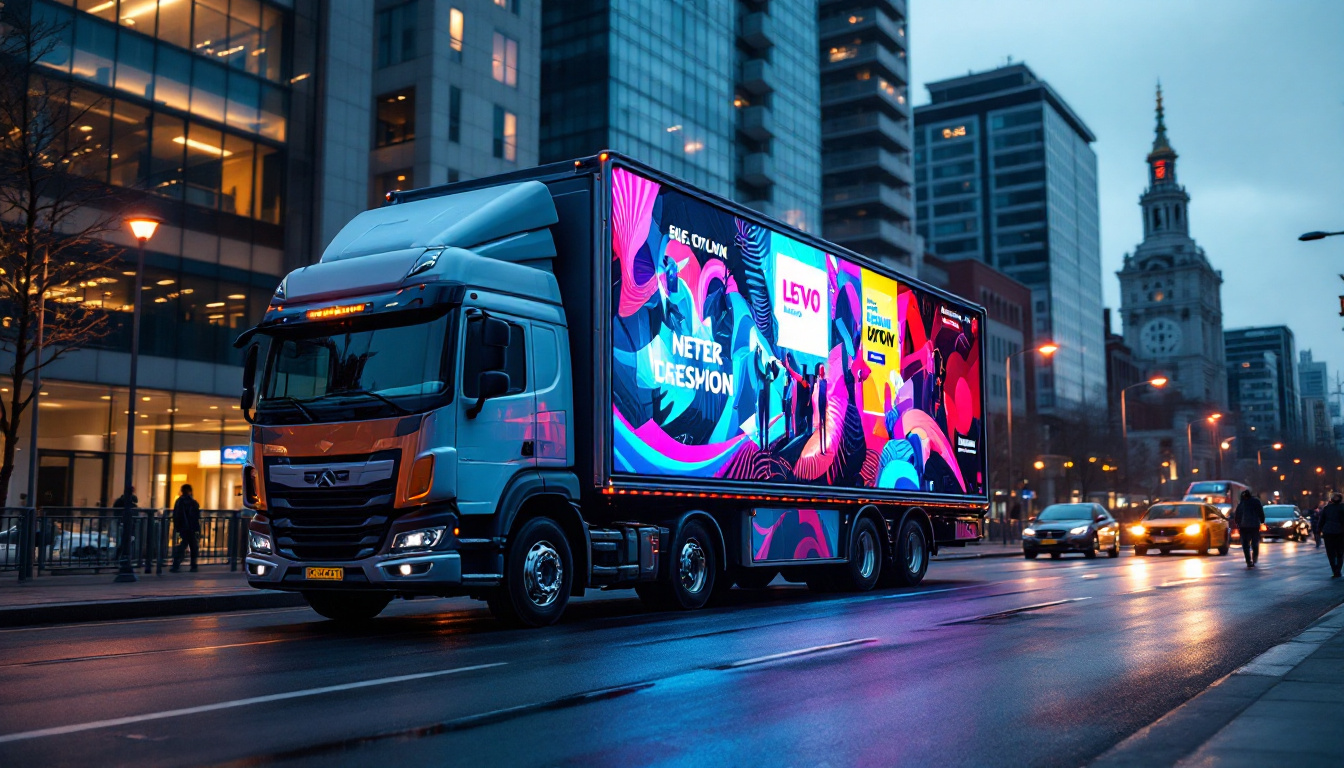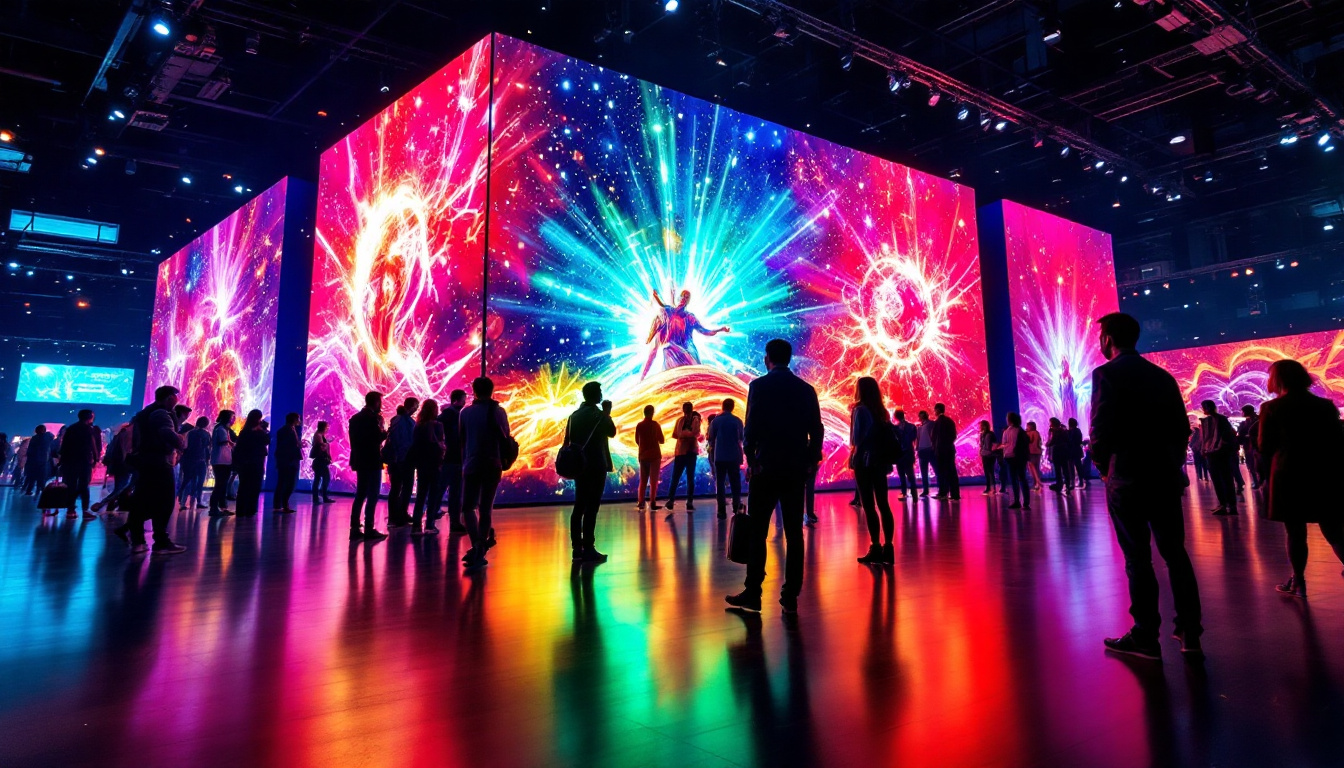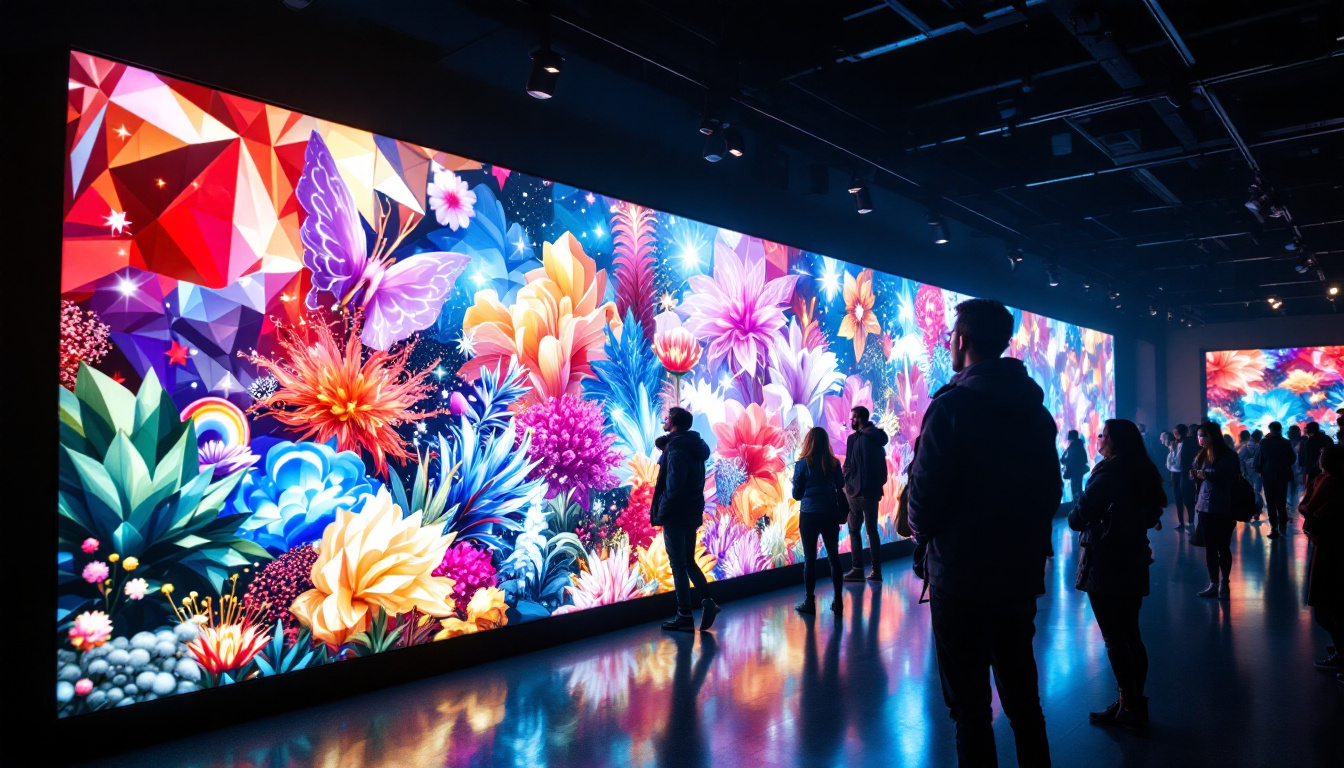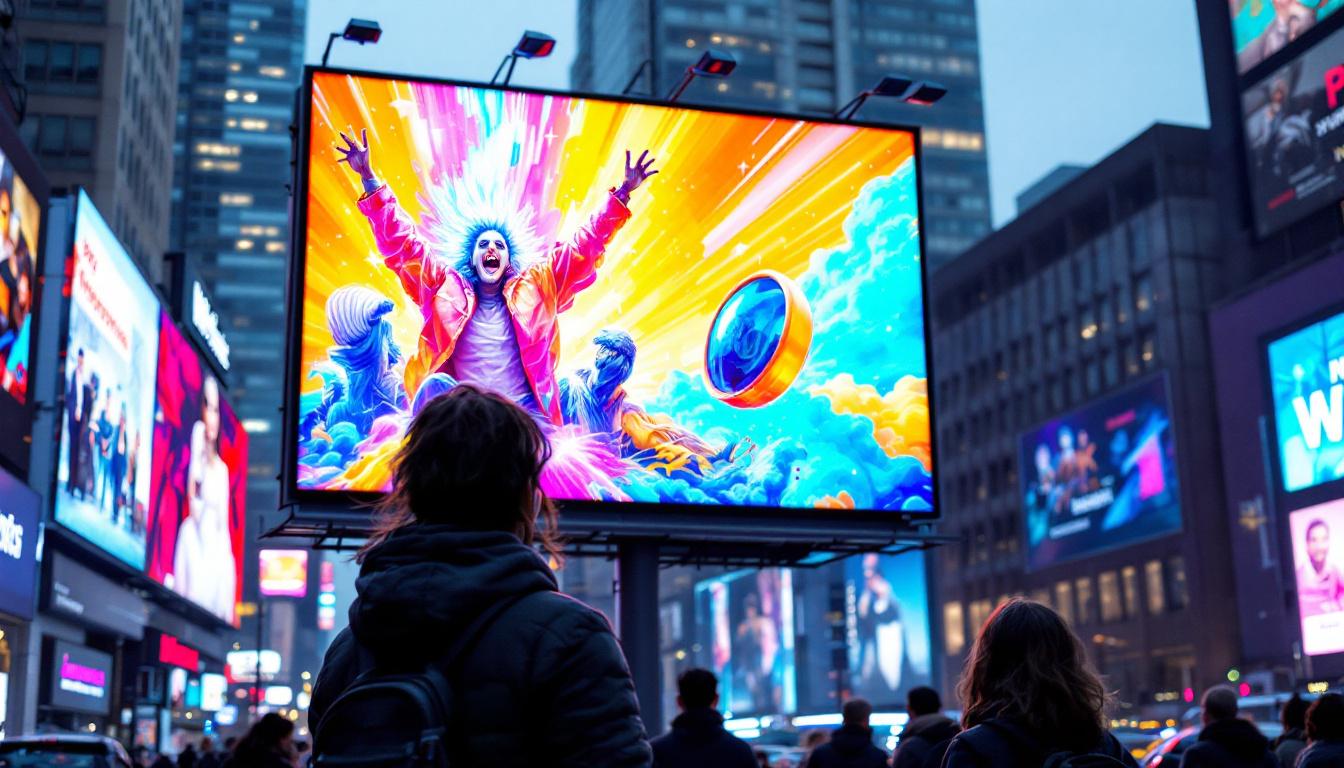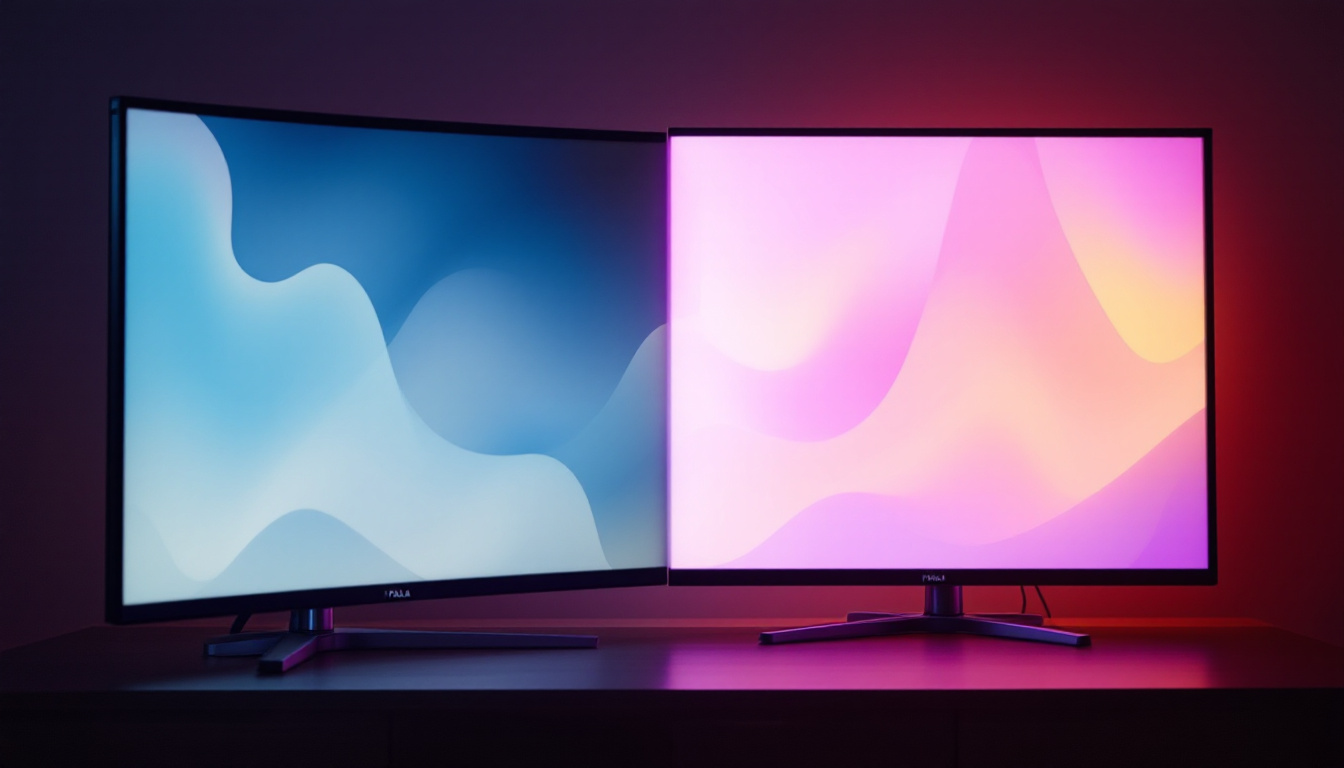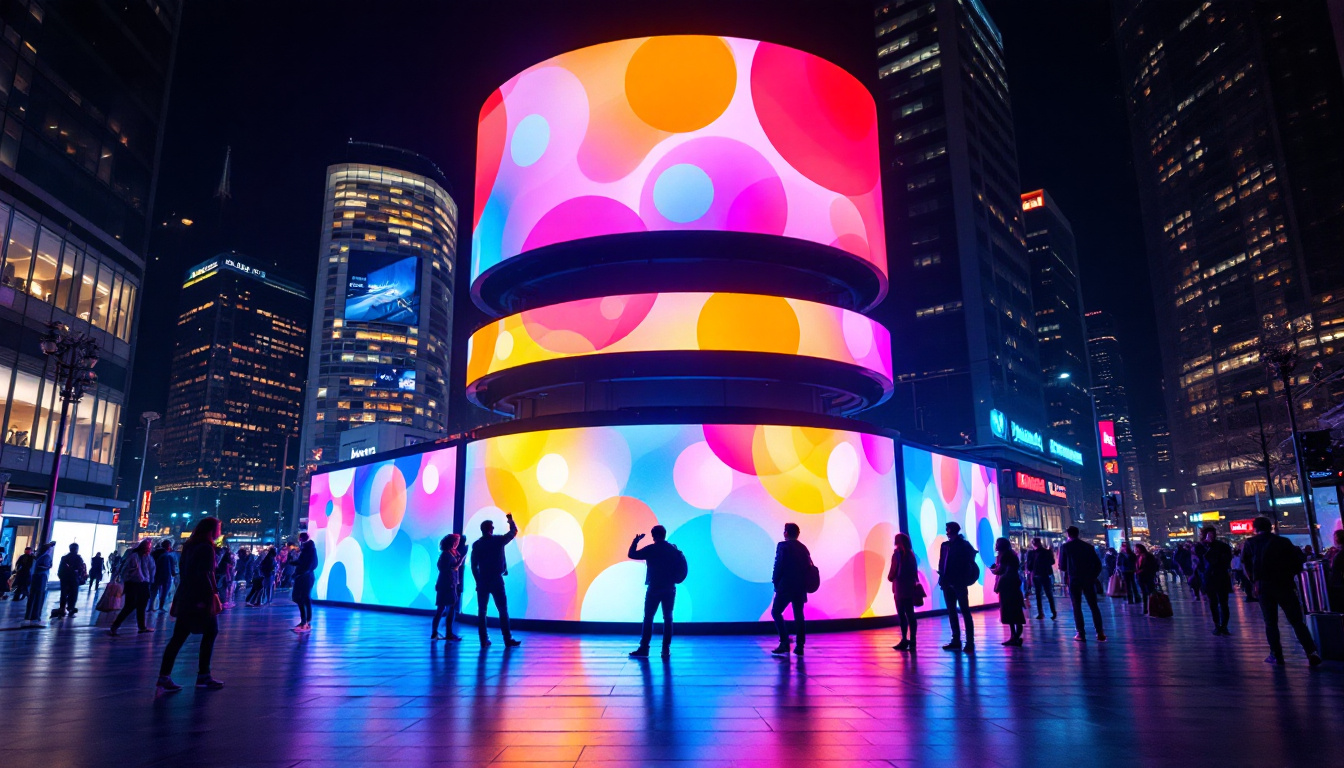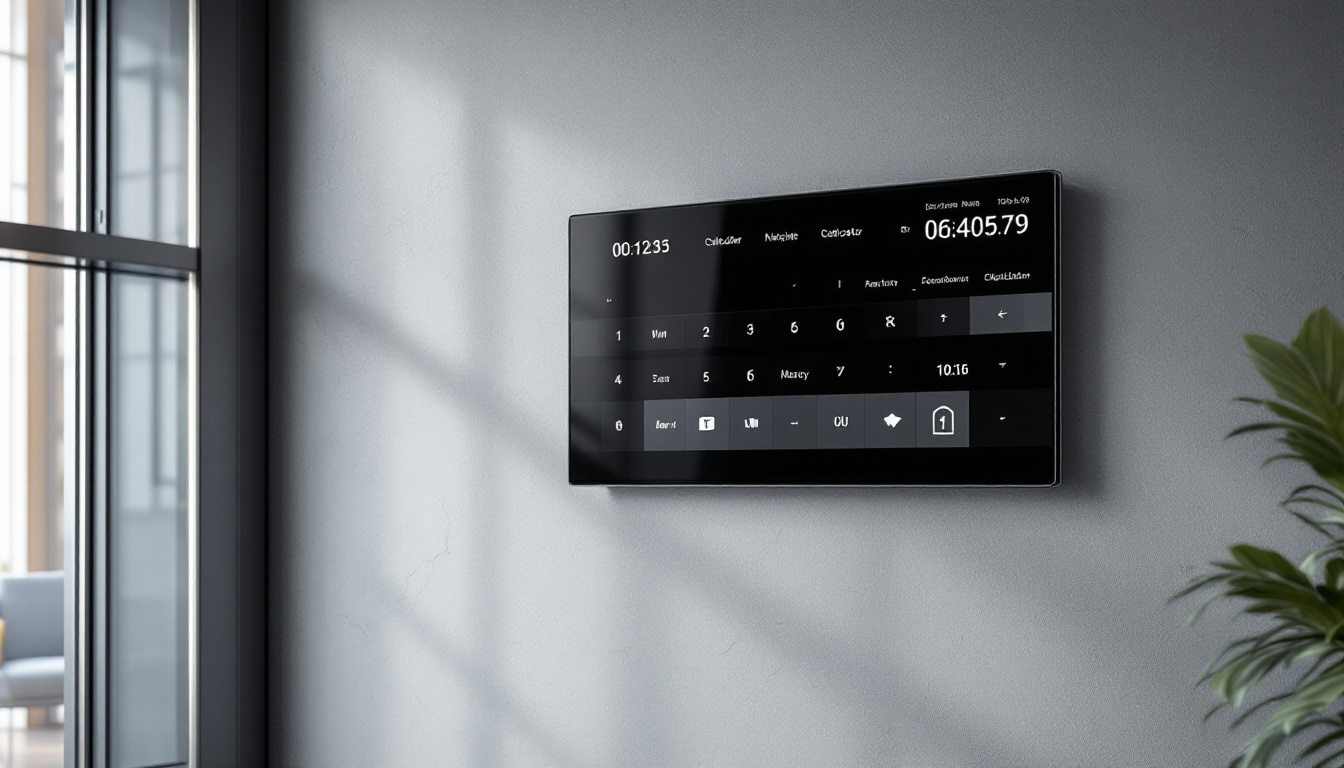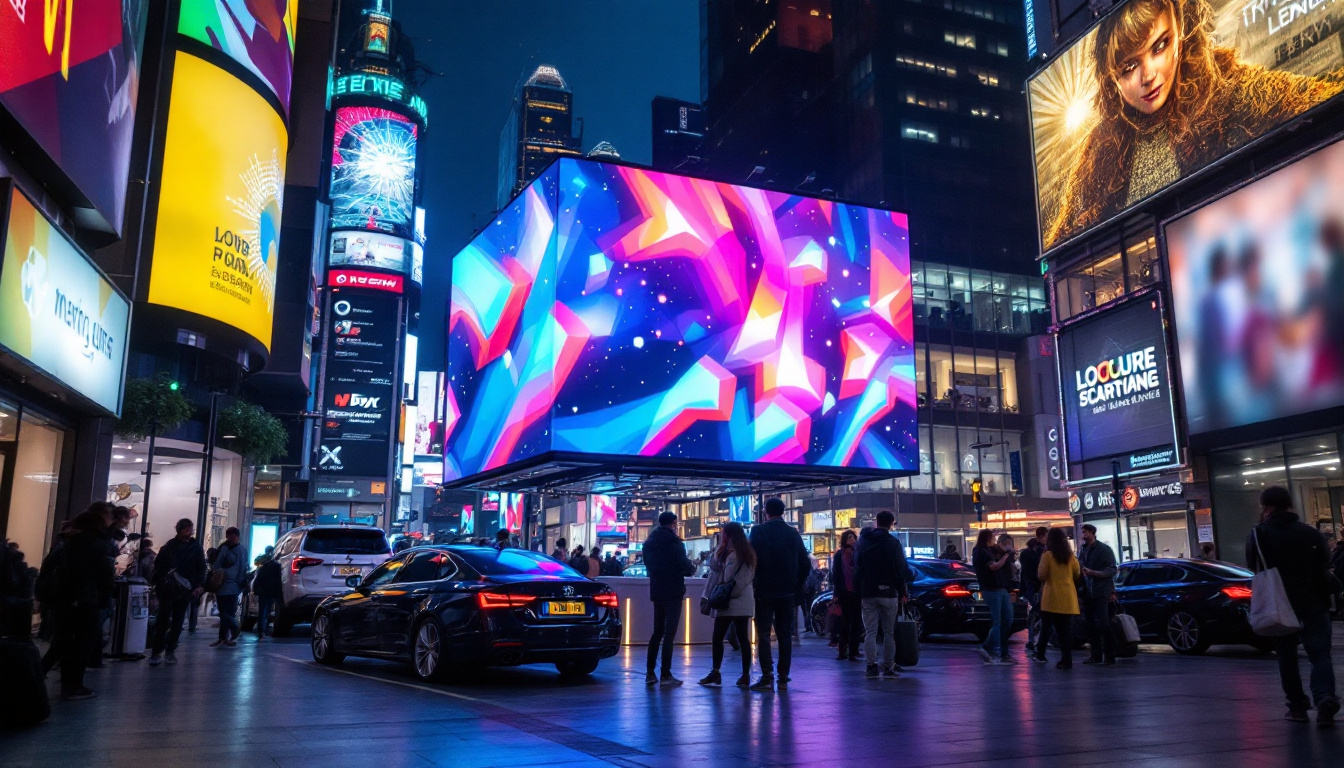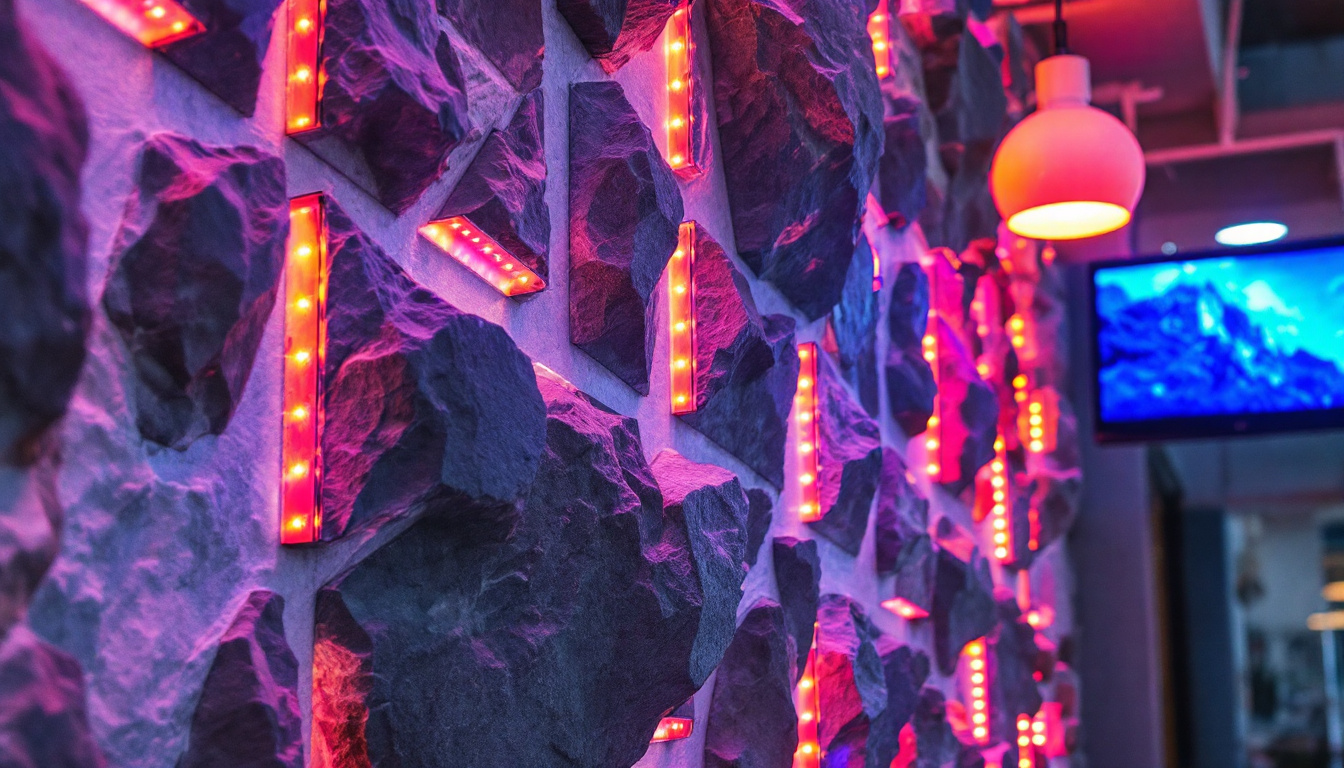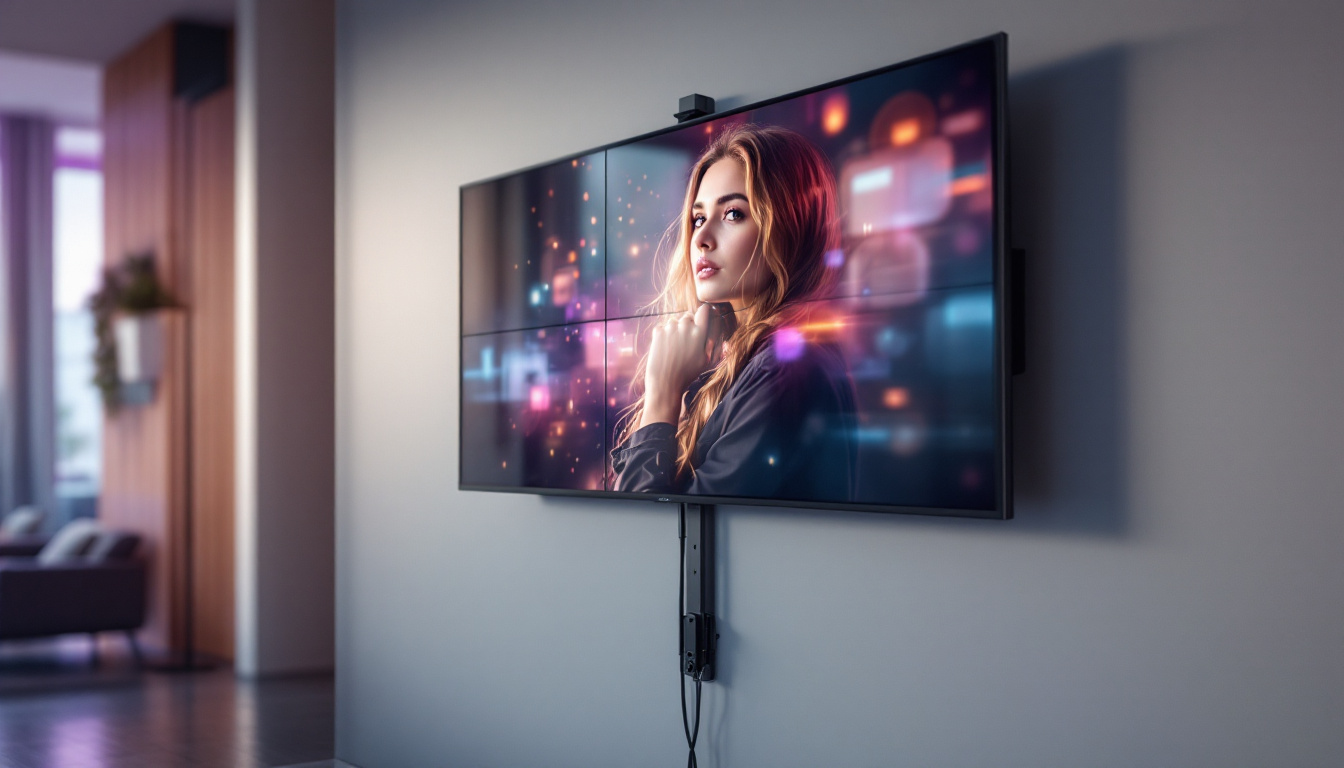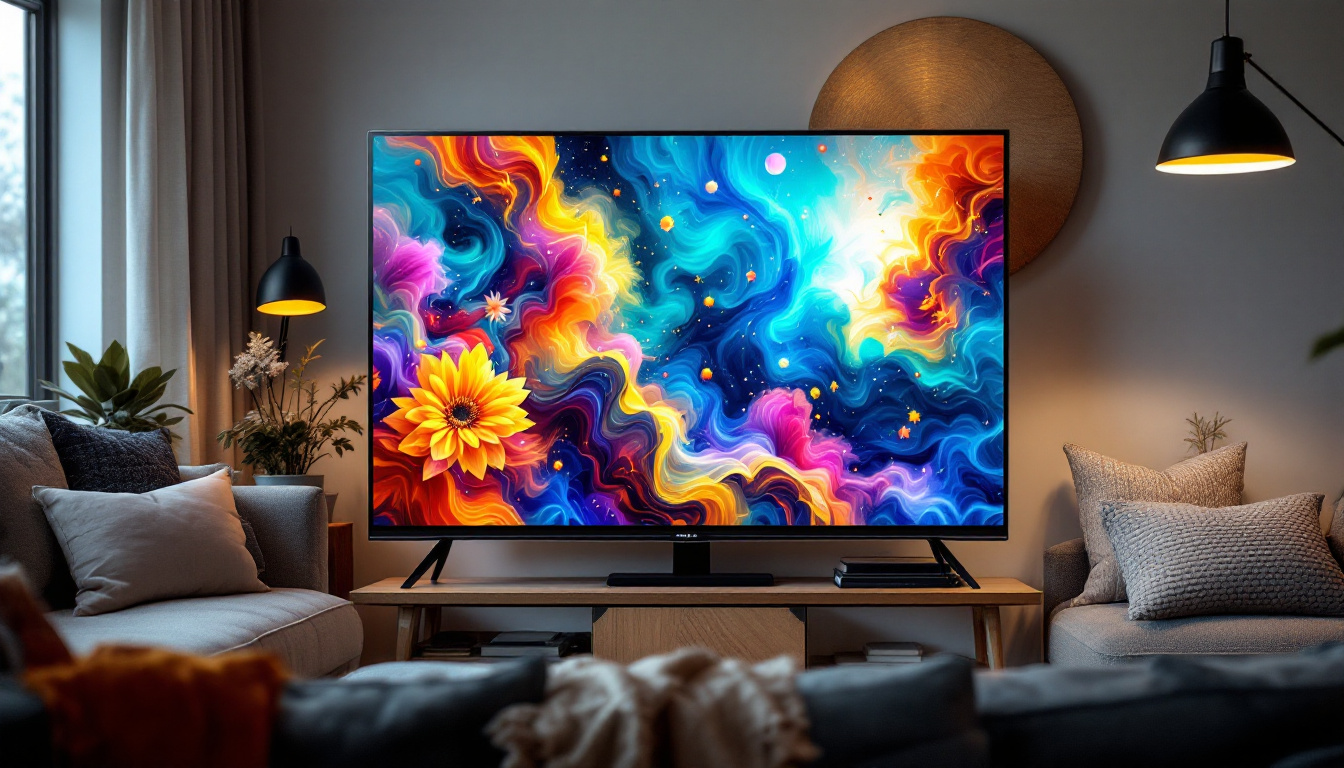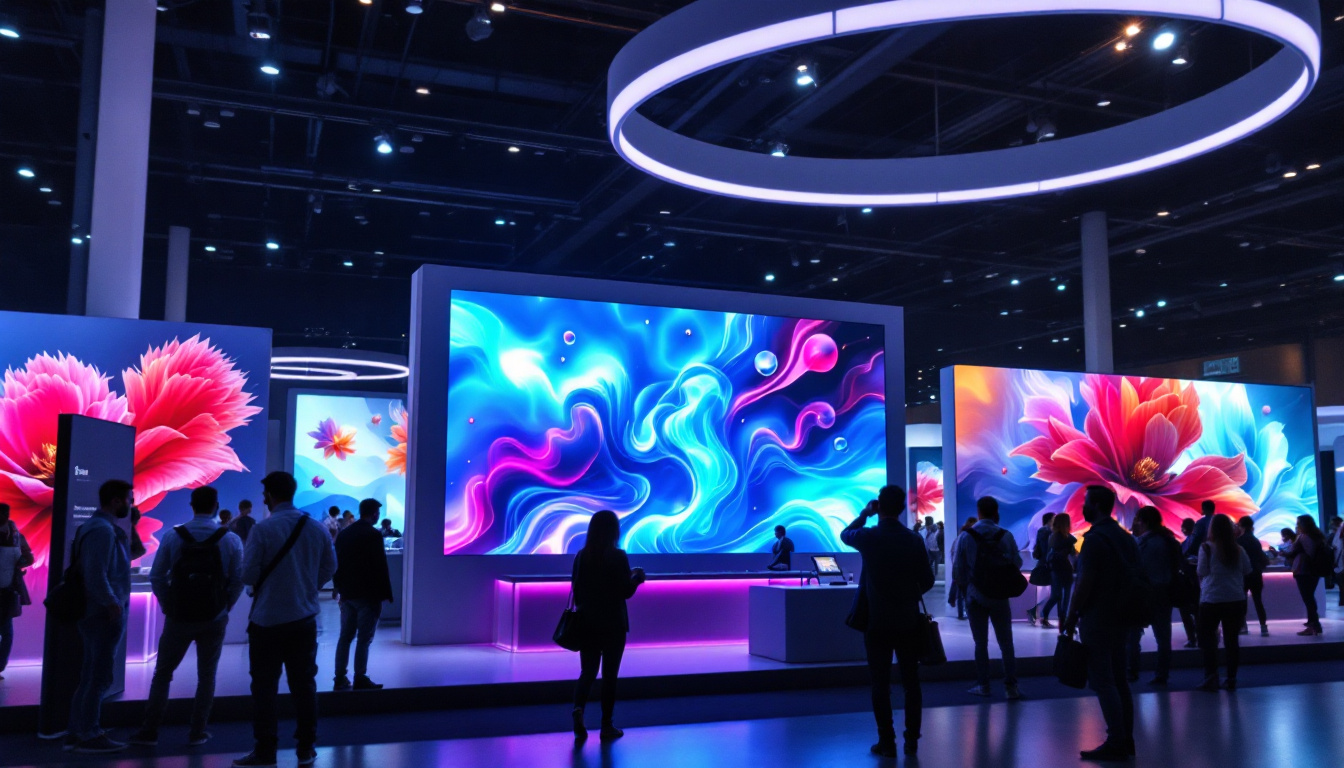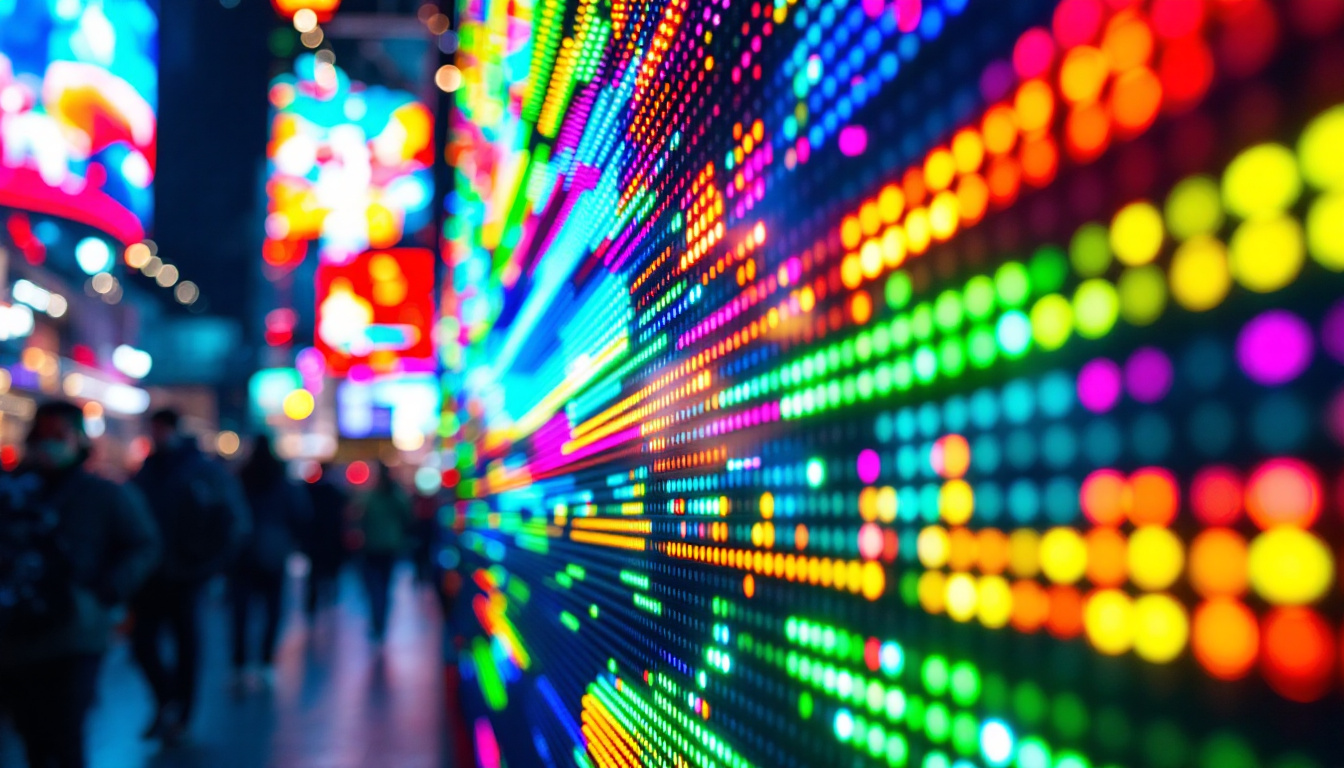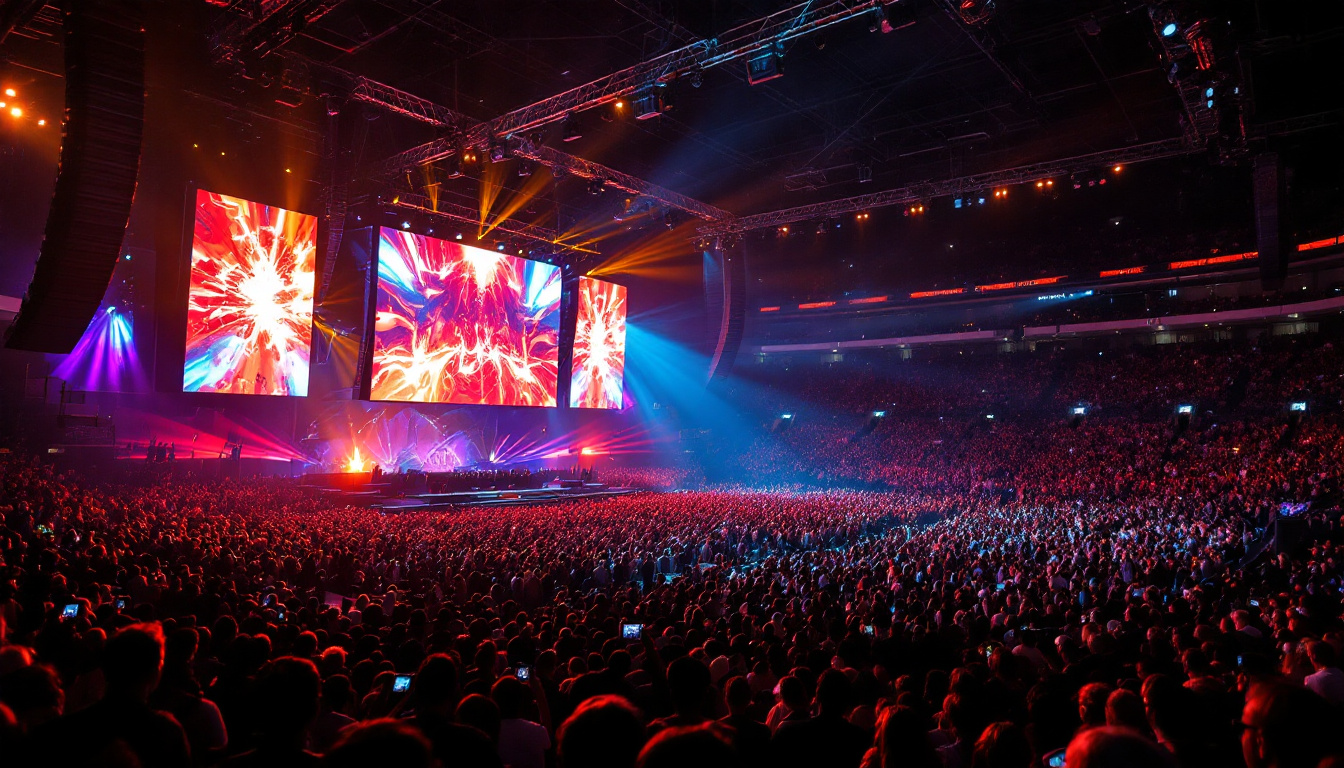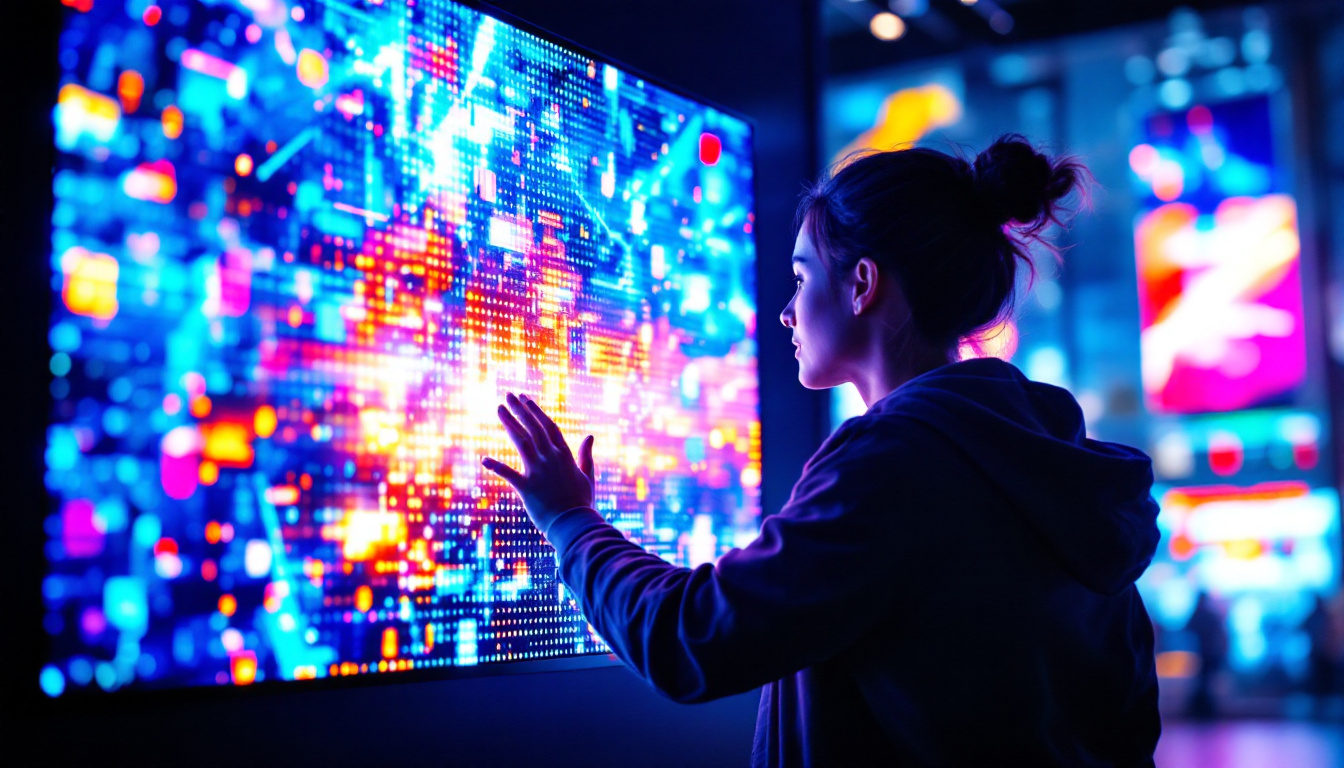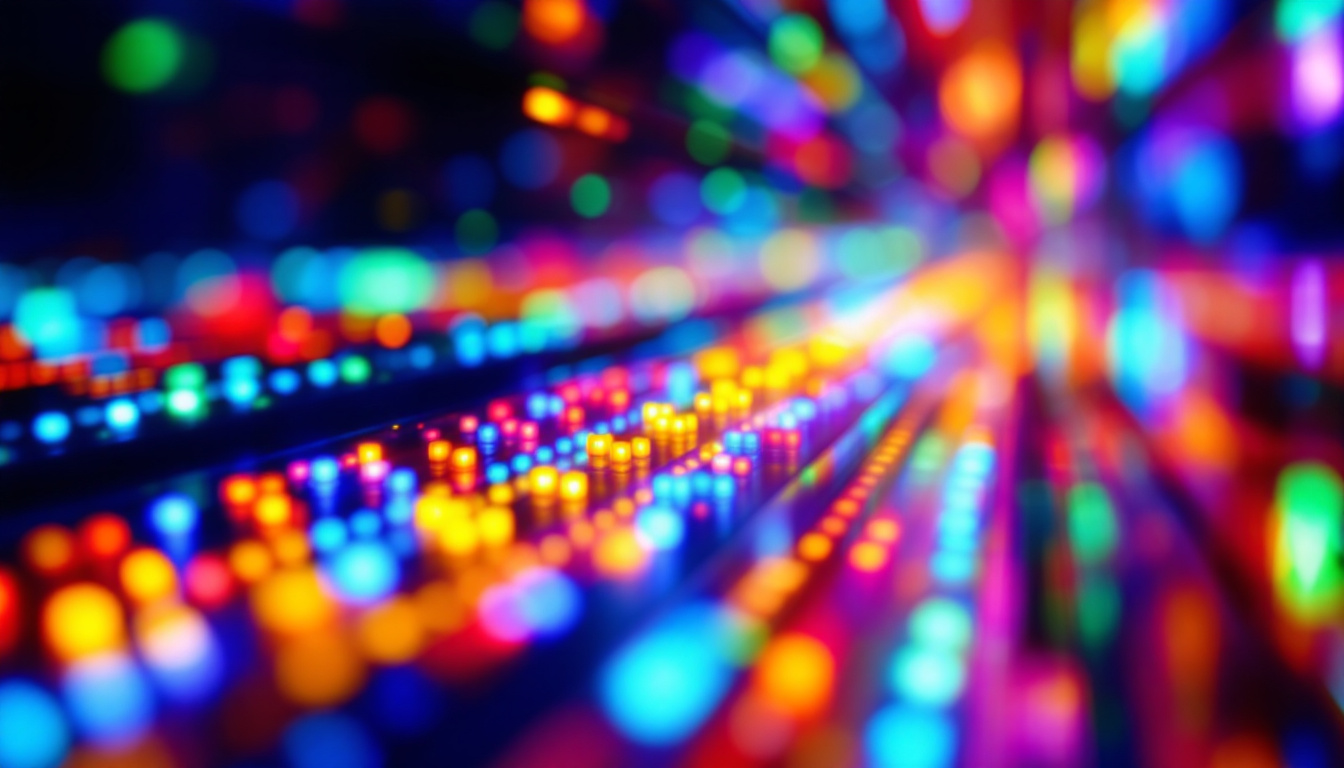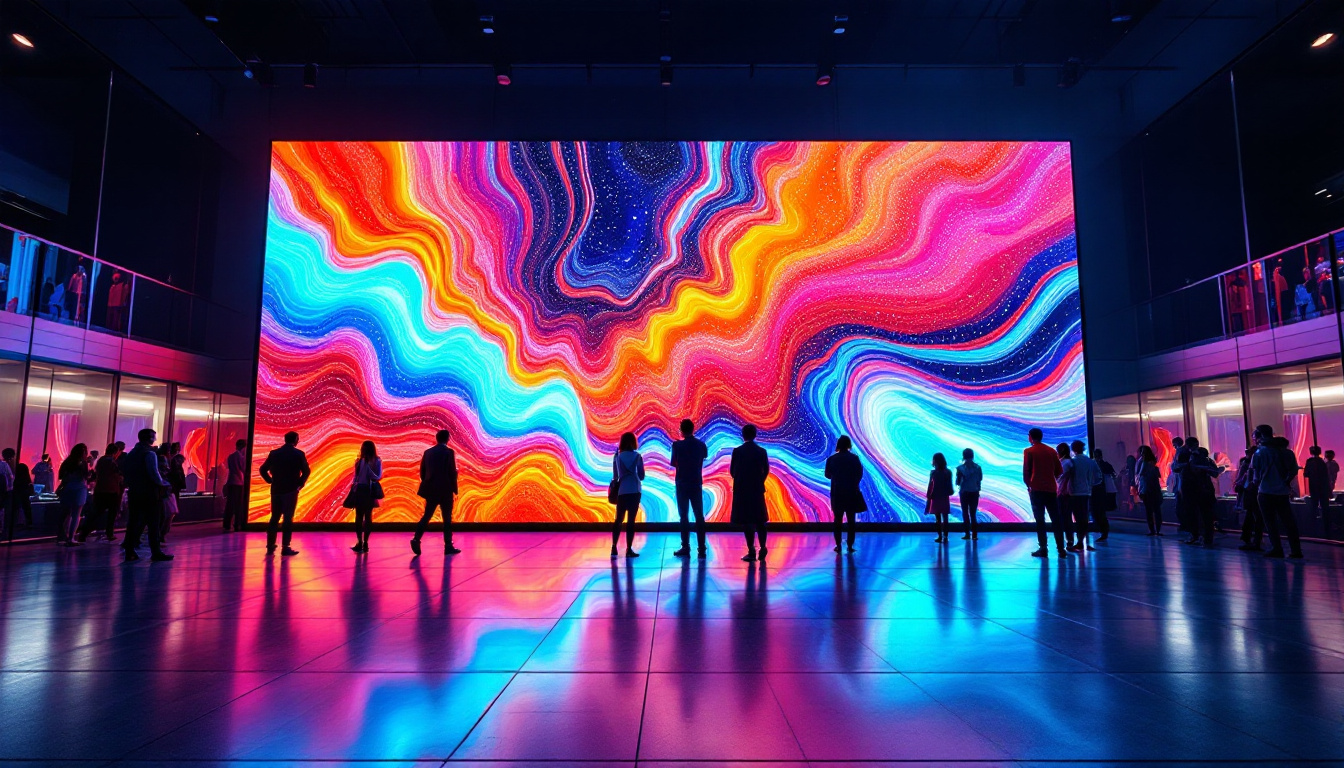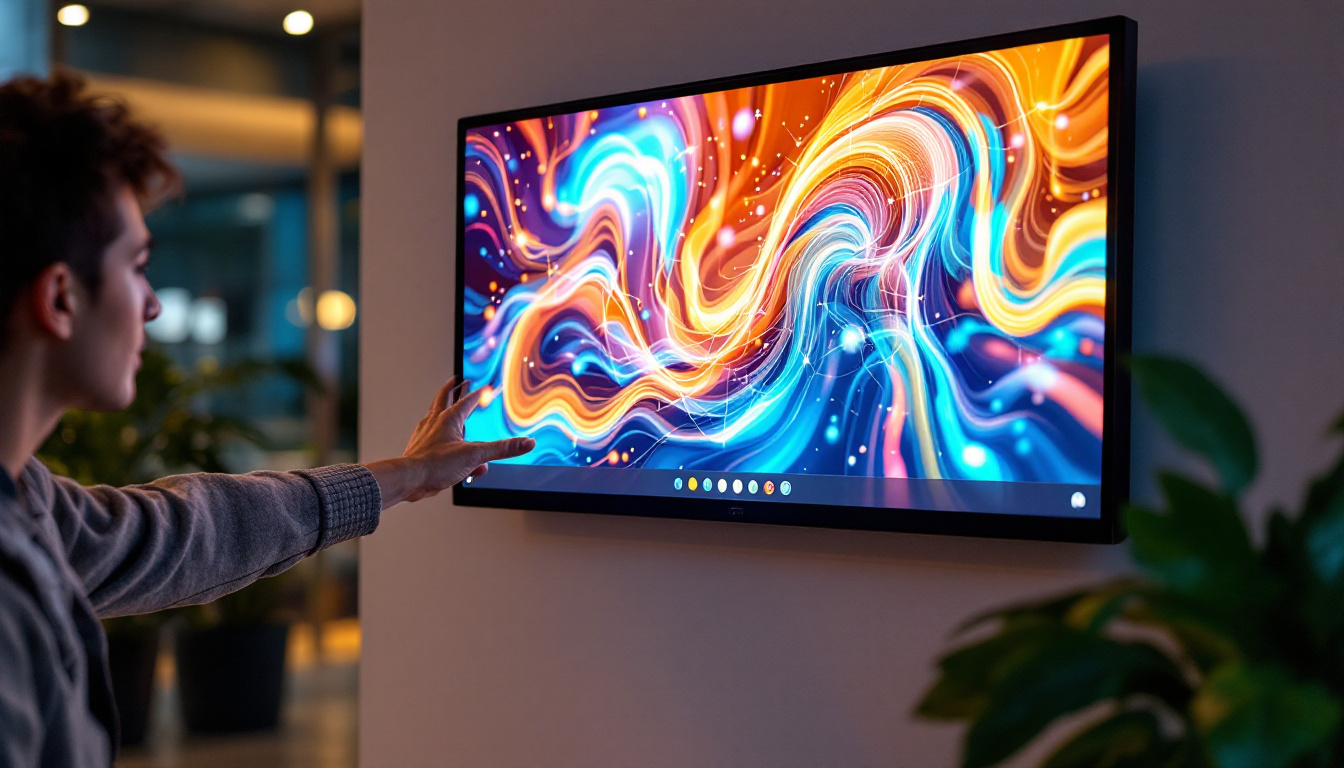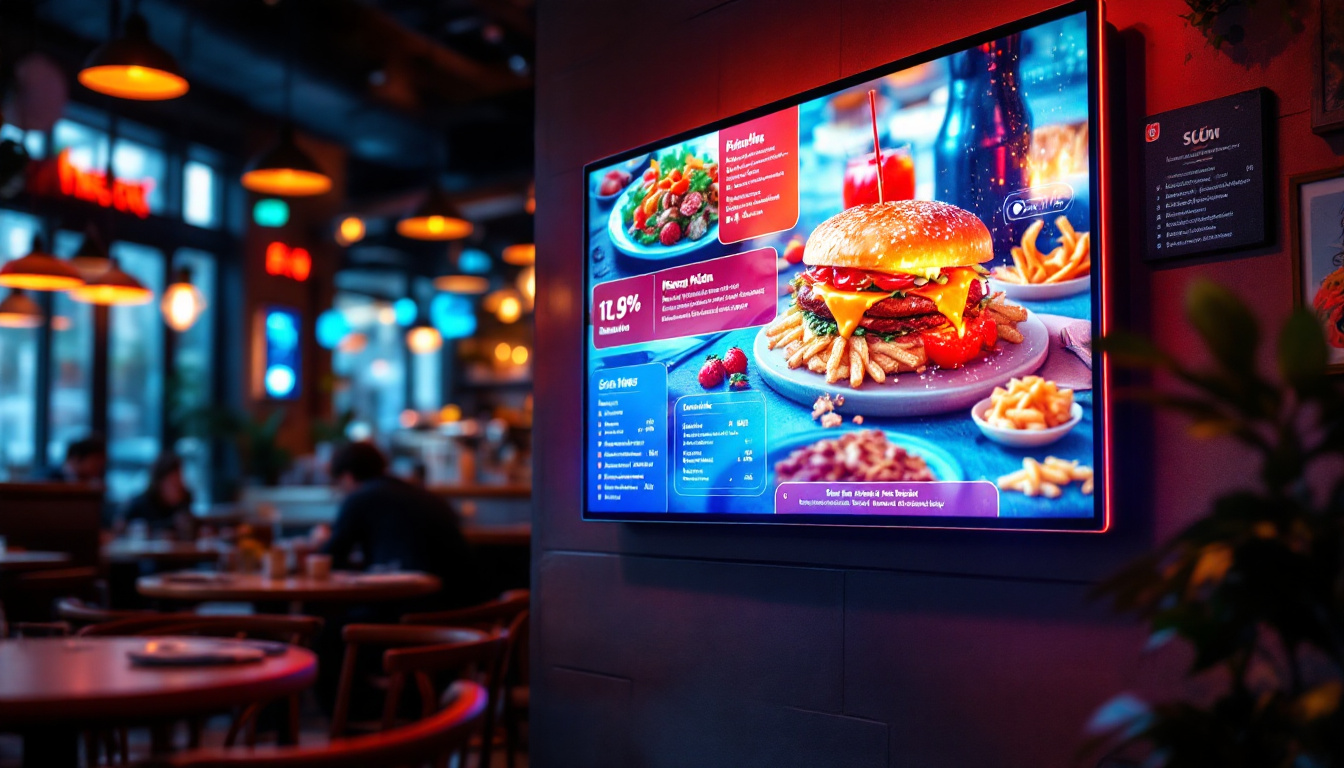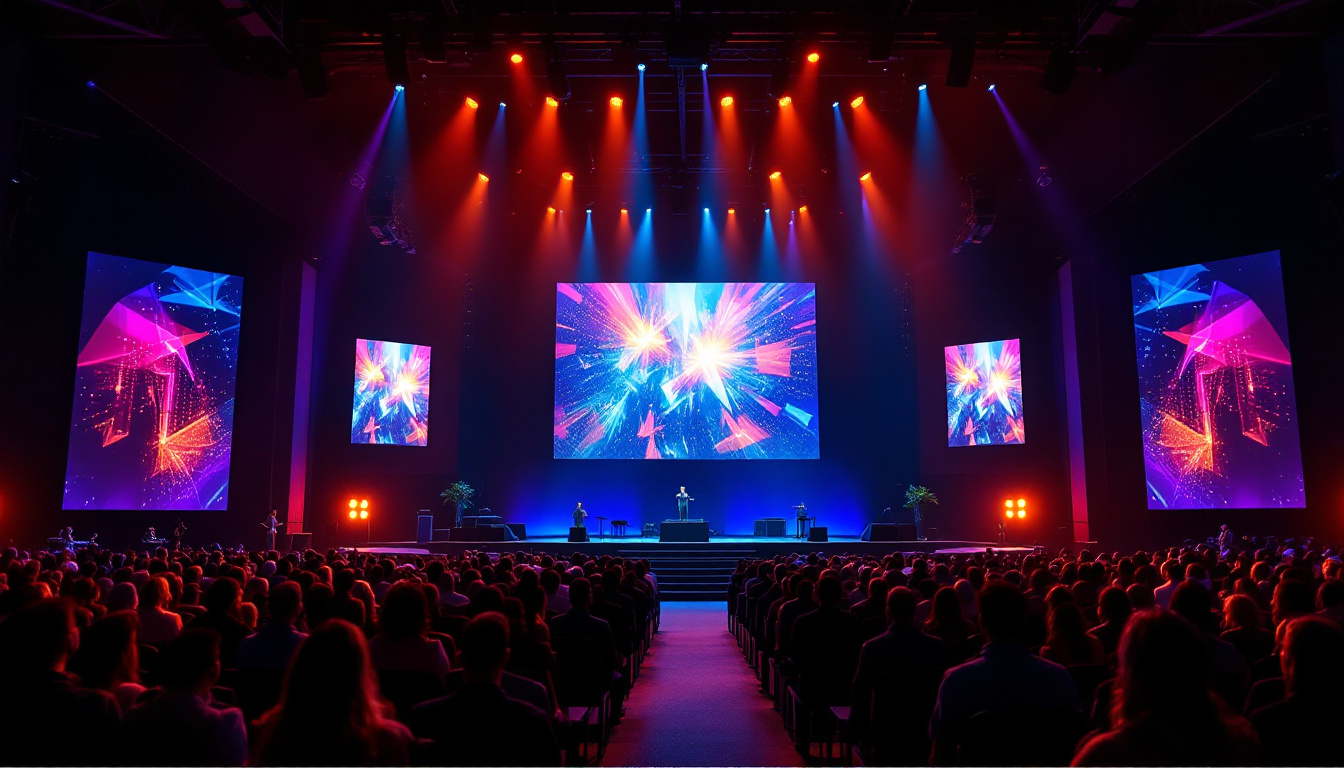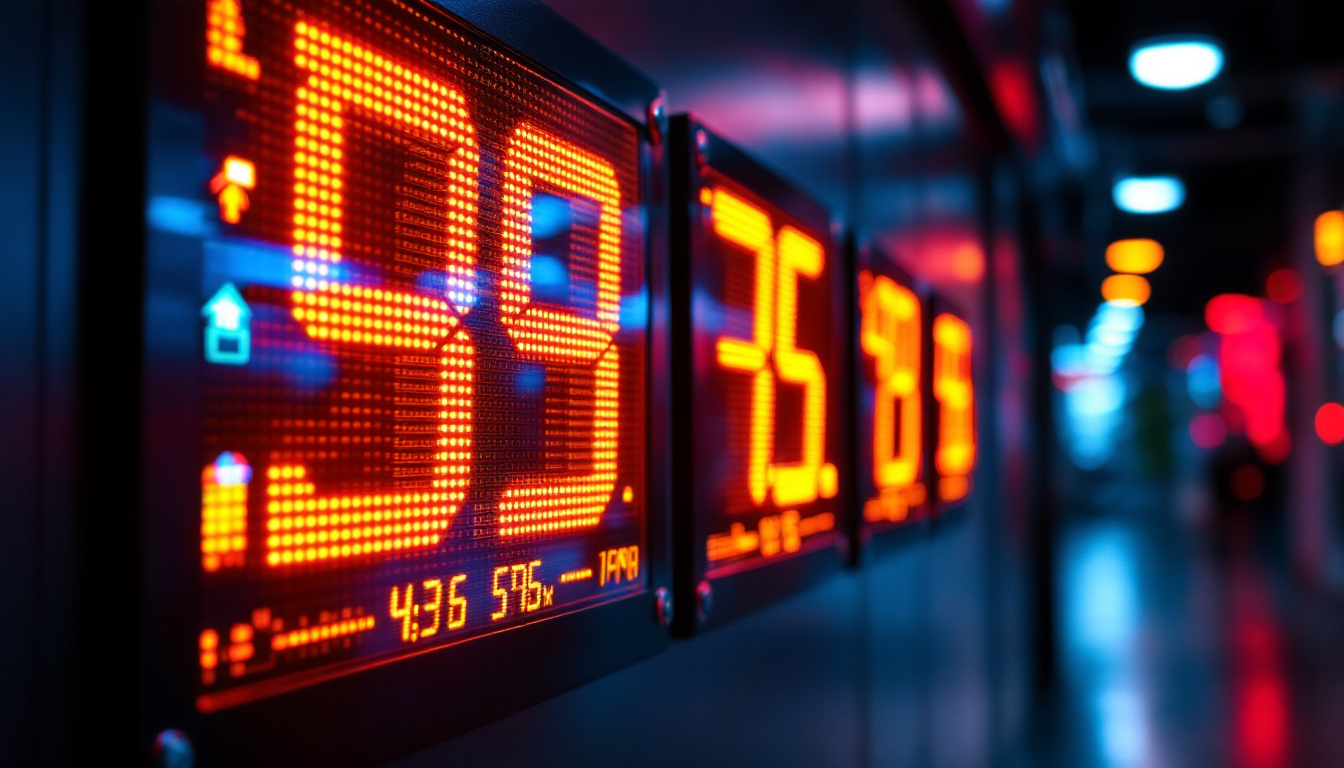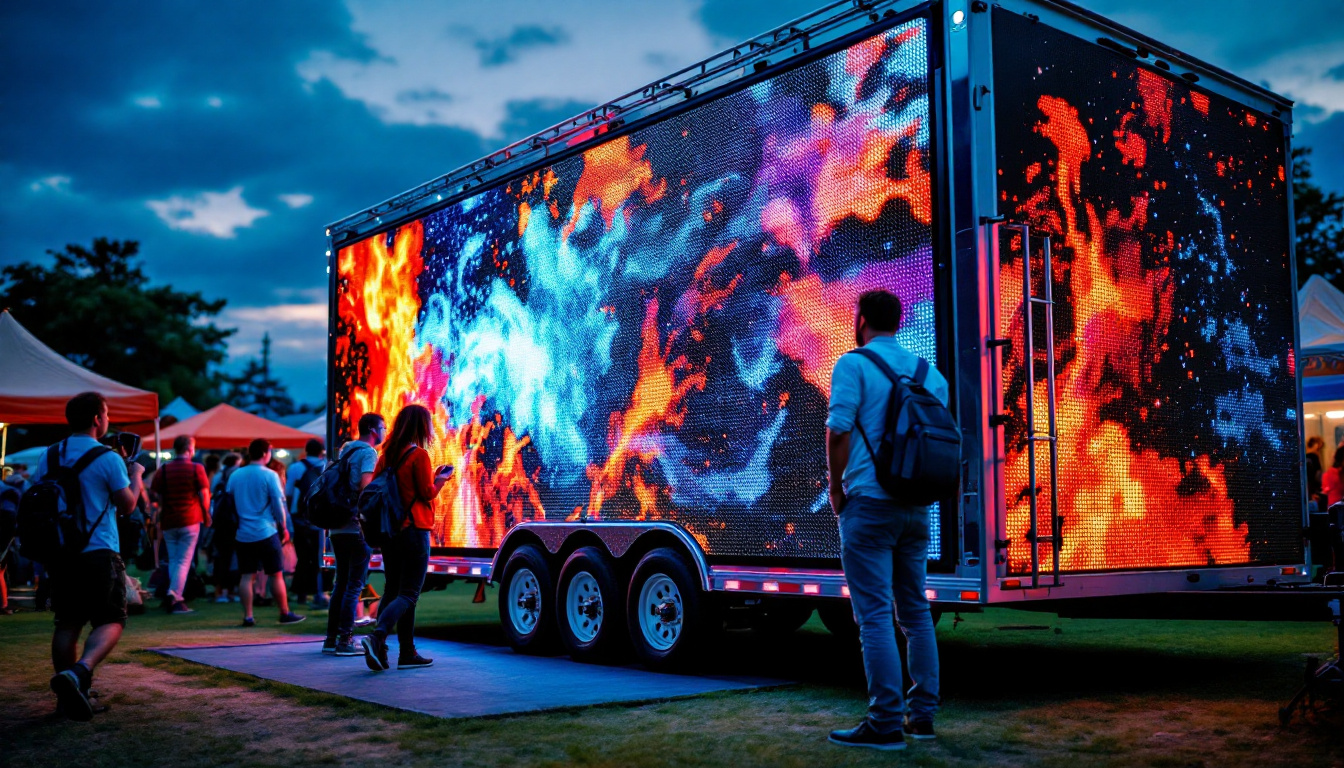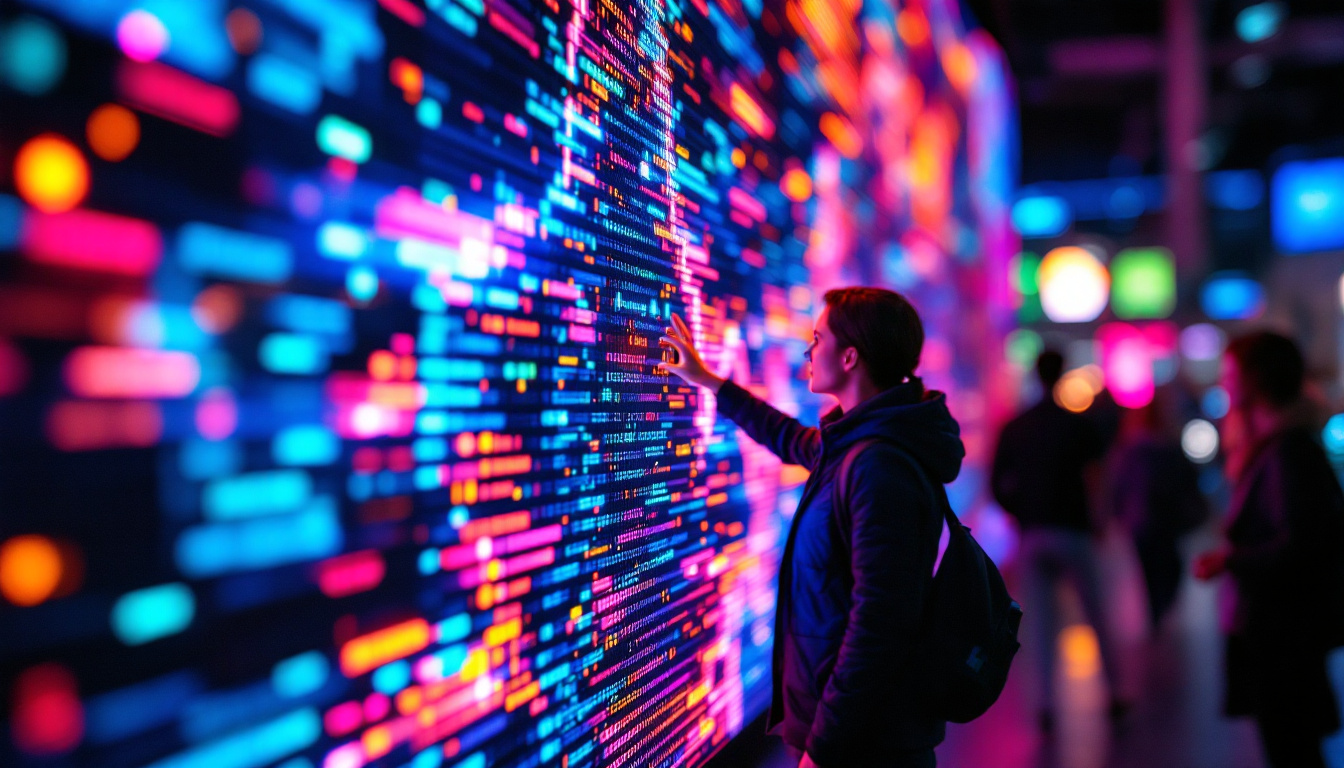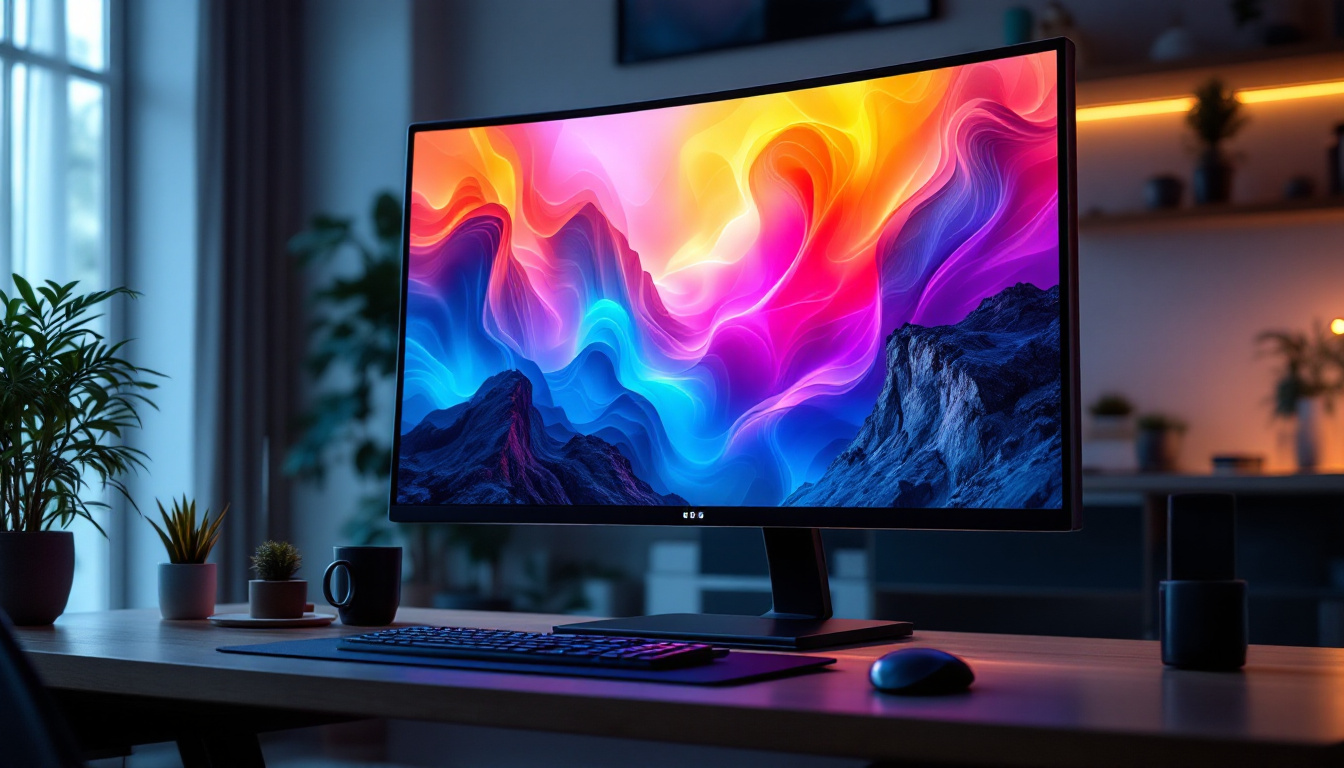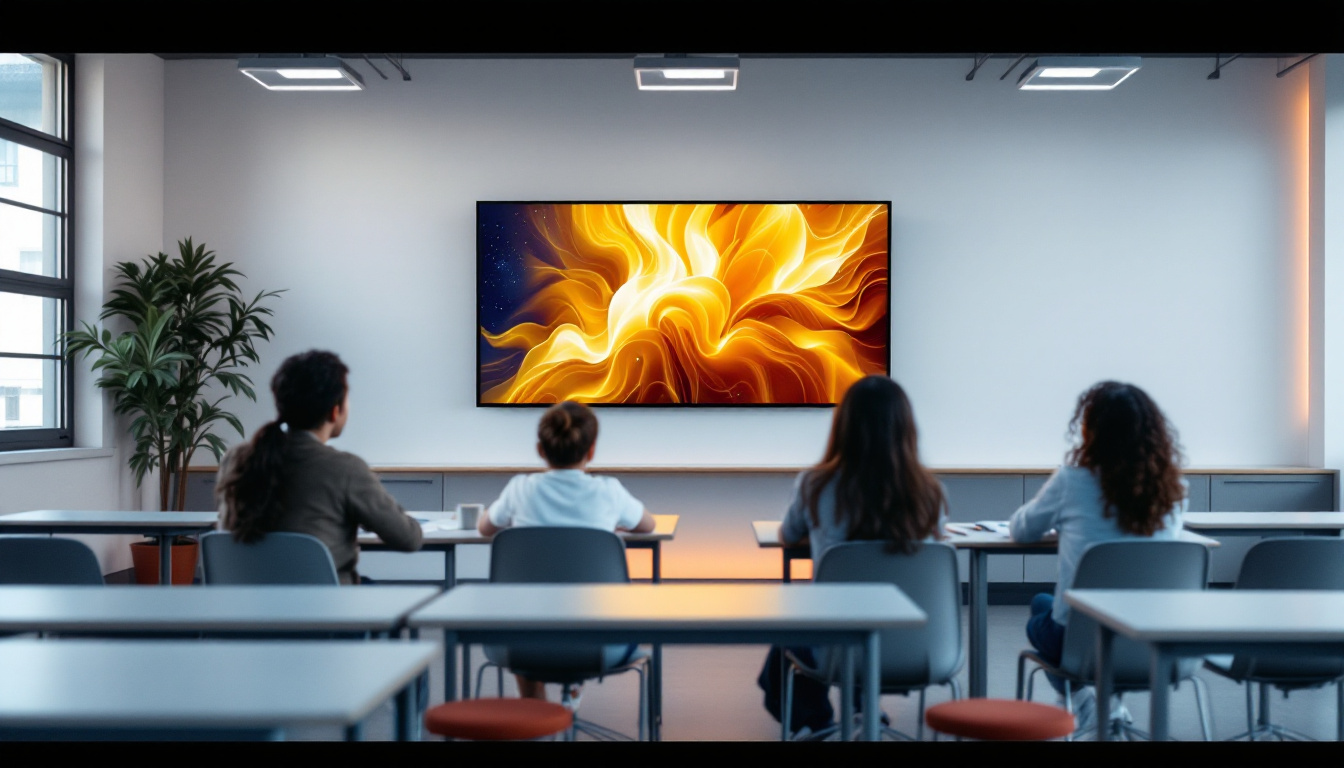In the realm of modern lighting solutions, LED displays have emerged as one of the most versatile and efficient technologies available. From large-scale advertising billboards to intimate indoor settings, LED displays are revolutionizing how we perceive and interact with visual information. This article delves into the intricacies of LED displays, exploring their technology, applications, advantages, and future trends.
Understanding LED Technology
What is an LED?
Light Emitting Diodes (LEDs) are semiconductor devices that emit light when an electric current passes through them. Unlike traditional incandescent bulbs, which produce light through heat, LEDs convert electricity directly into light, making them far more energy-efficient. The basic structure of an LED involves a p-n junction, where positive and negative charge carriers recombine to produce photons, resulting in light emission. This efficiency not only reduces energy consumption but also extends the lifespan of the bulbs, often lasting tens of thousands of hours compared to the much shorter lifespan of incandescent bulbs.
Additionally, the compact size of LEDs allows for innovative lighting designs and applications that were previously unattainable with traditional lighting technologies. From architectural lighting that highlights the contours of buildings to intricate designs in automotive lighting, LEDs have revolutionized how we think about and utilize light in our environments. Their ability to be dimmed and controlled via smart technology further enhances their versatility, making them a popular choice for both residential and commercial use.
How LED Displays Work
LED displays consist of numerous tiny LED units arranged in a grid. Each unit can emit different colors depending on the combination of red, green, and blue (RGB) LEDs used. By varying the intensity of these colors, a full spectrum of hues can be created, enabling the display to showcase vibrant images and videos. The technology behind these displays can be categorized into two main types: direct view and backlit displays. Direct view displays are particularly effective in outdoor settings, where their brightness can cut through sunlight, ensuring that content remains visible even in bright conditions.
Moreover, the rapid response time of LED displays allows for seamless video playback and dynamic content changes, making them ideal for advertising and entertainment purposes. The pixel density in these displays can also be adjusted, providing options for both high-resolution images in smaller formats and larger, more visible displays for public viewing. This adaptability has made LED displays a staple in sports arenas, concert venues, and urban advertising spaces, where capturing attention is crucial.
Types of LED Displays
There are primarily two types of LED displays: direct view and backlit. Direct view LED displays are composed entirely of LEDs, providing a bright and vivid image. These are commonly used for digital billboards and large screens. Backlit LED displays, on the other hand, use LEDs to illuminate a liquid crystal display (LCD) panel. This type is prevalent in televisions and computer monitors, offering enhanced brightness and contrast compared to traditional LCDs. The backlighting technology has evolved, with options such as edge-lit and full-array backlighting, each offering distinct advantages in terms of color accuracy and uniformity.
In addition to these primary types, there are also specialized LED displays designed for specific applications, such as transparent LED displays that allow viewers to see through them while still displaying images, or flexible LED screens that can be bent or shaped to fit unique spaces. These innovations are pushing the boundaries of how we use displays in advertising, art installations, and even in everyday consumer electronics, showcasing the endless possibilities of LED technology in our modern world.
Applications of LED Displays
Advertising and Marketing
One of the most prominent applications of LED displays is in advertising. Digital billboards and signage have transformed the marketing landscape, allowing businesses to display dynamic content that can be updated in real time. This flexibility not only attracts attention but also enables targeted advertising based on time of day or audience demographics.
Moreover, LED displays can be found in various public spaces, such as malls, airports, and stadiums, providing essential information and enhancing the overall experience for visitors. The ability to showcase high-resolution images and videos makes them an effective tool for engaging potential customers.
Entertainment and Events
In the entertainment industry, LED displays play a crucial role in enhancing live performances, concerts, and events. Large LED screens are often used to project visuals that complement the performance, creating an immersive experience for the audience. Additionally, LED technology is utilized in stage backdrops, lighting effects, and even costumes, pushing the boundaries of creativity.
Festivals and public gatherings also leverage LED displays for announcements, schedules, and entertainment, ensuring that attendees remain informed and engaged throughout the event. The adaptability of LED technology allows for various configurations, from massive outdoor screens to smaller displays for intimate settings.
Architectural and Interior Design
Beyond advertising and entertainment, LED displays have found their way into architectural and interior design. Building facades adorned with LED screens can create stunning visual effects, transforming ordinary structures into eye-catching landmarks. This trend is particularly evident in urban environments, where LED displays contribute to the vibrancy of city life.
Inside commercial spaces, LED displays can enhance branding and customer experience. Retailers use them to showcase products, promotions, and interactive content, creating a dynamic shopping environment. In offices, LED displays serve as information boards, enhancing communication and collaboration among employees.
Advantages of LED Displays
Energy Efficiency
One of the standout features of LED displays is their energy efficiency. Compared to traditional lighting technologies, LEDs consume significantly less power, making them an environmentally friendly option. This not only reduces operational costs but also minimizes the carbon footprint associated with energy consumption.
The long lifespan of LED technology further enhances its efficiency. With a lifespan of up to 100,000 hours, LED displays require less frequent replacements, leading to lower maintenance costs and waste generation. This longevity makes them a cost-effective investment in the long run.
High Brightness and Visibility
LED displays are known for their high brightness levels, making them suitable for various lighting conditions. Whether in direct sunlight or dimly lit environments, LED displays maintain their visibility, ensuring that content is easily readable. This characteristic is particularly beneficial for outdoor advertising and public information displays.
Additionally, the wide viewing angles offered by LED technology allow for a broader audience reach. Viewers can see the content clearly from different positions, enhancing the overall effectiveness of the display.
Versatility and Customization
The versatility of LED displays is another significant advantage. They can be manufactured in various shapes and sizes, allowing for creative installations that suit specific needs. From curved displays to transparent screens, the possibilities are virtually limitless.
Moreover, LED displays can be customized to fit the branding and aesthetic requirements of businesses. This flexibility enables companies to create unique visual experiences that resonate with their target audience, enhancing brand recognition and loyalty.
Challenges and Considerations
Initial Costs
While LED displays offer numerous advantages, the initial investment can be a barrier for some businesses. The upfront costs associated with purchasing and installing LED technology may be higher than traditional display options. However, it is essential to consider the long-term savings in energy and maintenance costs when evaluating the overall value.
Financing options and leasing arrangements are often available, allowing businesses to spread the cost over time. This approach can make LED displays more accessible and financially viable for smaller enterprises.
Content Management
Another challenge associated with LED displays is content management. To maximize the effectiveness of LED technology, businesses must invest in quality content that captures attention and communicates messages effectively. This requires a strategic approach to content creation and management, ensuring that visuals are engaging and relevant.
Additionally, businesses need to consider the technical aspects of content delivery, including software solutions for scheduling and updating content. Investing in a robust content management system can streamline this process and enhance the overall impact of the display.
Environmental Impact
Despite their energy efficiency, the production and disposal of LED displays raise environmental concerns. The manufacturing process involves the use of raw materials and energy, contributing to environmental degradation. Furthermore, improper disposal of LED displays can lead to electronic waste, which poses a threat to the environment.
To mitigate these issues, manufacturers are increasingly adopting sustainable practices, such as using recyclable materials and implementing take-back programs. Consumers can also play a role by ensuring that old displays are disposed of responsibly, promoting a circular economy.
The Future of LED Displays
Technological Advancements
The future of LED displays is poised for exciting advancements. Innovations in technology, such as microLED and organic LED (OLED), are set to enhance display quality and versatility. MicroLED technology, in particular, offers higher resolution and better energy efficiency, making it a promising option for future applications.
Moreover, advancements in artificial intelligence and augmented reality (AR) are likely to influence how LED displays are used. Interactive displays that respond to user engagement and integrate AR elements can create immersive experiences that captivate audiences.
Integration with Smart Technologies
As smart technology continues to evolve, the integration of LED displays with smart systems is becoming increasingly common. This integration allows for real-time data display, automated content updates, and enhanced interactivity. For instance, LED displays in retail environments can adapt content based on customer behavior and preferences, creating a personalized shopping experience.
Furthermore, the Internet of Things (IoT) is expected to play a significant role in the future of LED displays. Connected displays can communicate with other devices, enabling seamless information sharing and enhancing operational efficiency.
Sustainability Initiatives
With growing awareness of environmental issues, sustainability initiatives are becoming a focal point in the LED display industry. Manufacturers are investing in eco-friendly materials and production methods, aiming to reduce their environmental impact. Additionally, energy-efficient designs and smart technologies are being prioritized to minimize energy consumption.
As consumers increasingly demand sustainable solutions, businesses that adopt eco-friendly practices in their LED display usage will likely gain a competitive edge. This trend not only benefits the planet but also enhances brand reputation and customer loyalty.
Conclusion
LED displays have transformed the way we experience visual communication, offering unparalleled advantages in energy efficiency, brightness, and versatility. Their applications span various industries, from advertising to entertainment and interior design, making them an essential tool for modern businesses. While challenges such as initial costs and content management exist, the long-term benefits and advancements in technology present exciting opportunities for the future.
As the industry continues to evolve, embracing sustainability and smart technologies will be crucial for maximizing the potential of LED displays. By understanding the intricacies of this technology, businesses can leverage LED displays to enhance their visibility, engage their audience, and contribute to a more sustainable future.
Discover LumenMatrix LED Display Solutions
Ready to elevate your visual communication and captivate your audience with the latest in LED technology? LumenMatrix is at the forefront of innovative LED display solutions, offering a wide range of products from Indoor and Outdoor LED Wall Displays to specialized options like Vehicle, Sports, and Floor LED Displays. Our mission is to transform your brand’s visibility with displays that not only engage but also inspire. Check out LumenMatrix LED Display Solutions today and take the first step towards a brighter, more sustainable future in digital signage.


